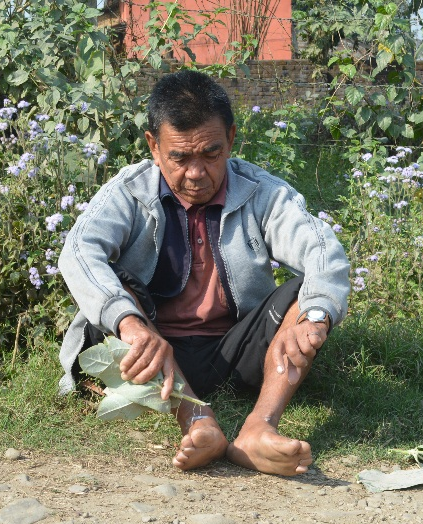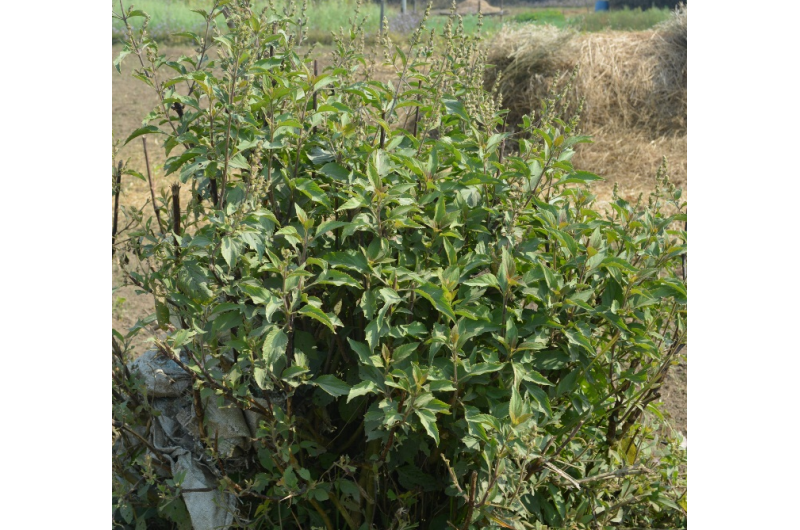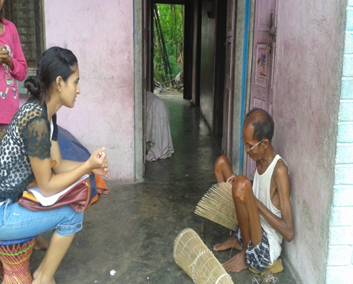Nepal's rich indigenous medical knowledge is under threat

Nepal is a diverse demography with over 125 ethnic communities. It is equally rich in biodiversity. The diverse ethnic communities have a rich repertoire of knowledge related to the use of the herbs and animals for medicinal purposes.
A recent research article published in Journal of Institute of Science and Technology explores indigenous knowledge systems in the Darai community living in the Chitwan Valley in Nepal, some 200 kilometres southwest of capital Kathmandu. The article, available online on the NepJOL platform supported by INASP, describes this community's usage of animal and plant products to treat various diseases and ailments as a result of rich indigenous knowledge.
The Darai people - better known for their skills in weaving bamboo baskets - use 28 animal species to treat 22 different types of ailments, and 76 plant species to treat 36 types of ailments ranging from simple diseases like common cold and headache to complex diseases like typhoid, the research found.
"They did not use single plants or animal products for a single disease, but they used a mixture of multiple plants or animal products to treat an ailment; reciprocally, a single animal or plant product could be used to treat many different ailments," says Dr Nanda Bahadur Singh, author of the article and Professor of Ethno-genomics and Ethno-biology at Central Department of Zoology, Tribhuvan University, Kirtipur, Kathmandu.
The article analyses the types of plants or animals, the organs or parts used for medicinal purpose and the form it is ingested or applied in.
"The parts or the organs used for medical purposes varied with the species, so did the form of medicine," says Dr Singh. "In the case of animals, flesh, eggs, fat, bone etc. were used. In the case of plants, leaves, roots, fruits, flower, bark etc. were used."

Mostly the products were consumed raw. They were also consumed as paste, cooked, dried, in liquor and powder form.
The research article titled "Medical Ethnobiology and Indigenous Knowledge System Found in Darai Ethnic Group of Chitwan, Nepal" written by Manisha Poudel and Dr Nanda Bahadur Singh was a result of the field research in Mangalpur village in Chitwan district. The authors interviewed local healers and village elders to gather information and took a jungle walk to identify the samples.
Darai is only one of the dozens of communities living in the hills, mountains and the plains of Nepal which has rich indigenous knowledge. Dr Singh has studied many of them and has found that the indigenous knowledge system is very rich.
However the rich knowledge of the community passed on from generation to generation orally is now facing a risk because of the swift modernization, introduction of the internet, easy access and availability of allopathic medicine, and the younger generation's desire to migrate out of the village and adopt modern lifestyles.
"For that exact reason, it is important to document the traditional knowledge," says Dr Singh. "And we have done it in detail in a very scientific way."
He believes that the article, along with the other research he has done on indigenous knowledge systems, could be an important stepping stone to conduct large-scale research to improve Nepal's public health system.

"It is worrying that people are forgetting the traditional medicinal practices and depending solely on modern medicines," says Dr Singh. "While modern medicine has its own value, it is never sufficient alone to treat all types of illnesses."
He adds, "That is why an integrated system comprising of the best practices of different systems of allopathic and traditional systems should be applied in healthcare."
Dr Singh says, although rigorous scientific research hasn't been carried out to extract the compounds available in the plant and animal products they use to treat the diseases, local people have suggested effectiveness and demonstrated success in the use of traditional medicines for curing and controlling diseases.
It is understandable that modern medicines have been developed from certain compounds extracted from various types of plants and animals, he says. "The focus of our next research should be on extracting the molecules of the traditional medicines and put them to scientific tests."
Dr Singh concludes that there is a huge value in the indigenous knowledge that we haven't been able to put to use and so "We are working to set up a laboratory at the department for molecular research."
More information: Medical Ethno-biology and Indigenous Knowledge System Found in Darai Ethnic Group of Chitwan, Nepal. Journal of Institute of Science and Technology 2017.
Provided by INASP












.jpg)



